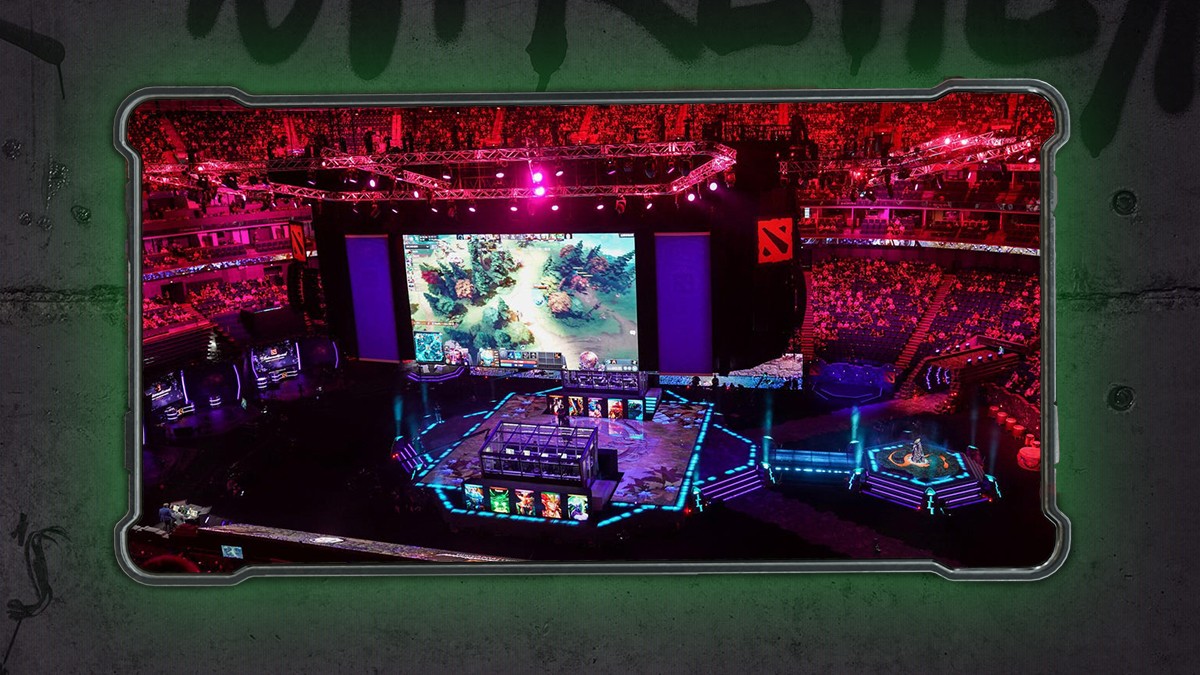In this Cover Story, we examine the esports evolution, and how erstwhile geeks have been transformed into global superstars.
Gaming and esports have changed a lot since their humble beginnings as a niche hobby in the early 1970s. In the last decade, it has become one of the biggest viewer sports, netting millions of audiences per tournament.
Gaming tournaments have also changed form, from simple get-togethers to jam-packed stadiums. Tournament prizes have also gotten bigger, now reaching a whopping USD40-million for a single tournament, from humble winnings of discount codes and food vouchers.
Yet, gaming and esports aren’t even in their final form. According to Statistica, it’s estimated that esports annual viewers will reach 474 million this year and will break the 500 million mark by 2024. Esports revenues are expected to reach USD600-million by 2023.
There’s so much more moving forward, so how did gaming turn to esports and how did the esports evolution turn geeks into superstars?
Humble Beginnings
To fully understand the esports evolution, we need to look back at its past. Video games started way back in the late 1950s with Tennis for Two, dubbed as the first visual video game created for the sake of entertainment.
When Steve Russell created Spacewar! in 1962 it opened up the world of gaming to more people as it was able to run on different computers. However, the players were still confined to university campuses. Gaming achieved its first competitive breakthrough in the 1970s games became available as arcade machines.
Arcades were the precursor to the competitive attitude of gamers. While multiplayer games were not available, the desire to beat the high score and become No. 1 gave gamers plenty of motivation to spend countless hours in arcades centers.
It was also in the late 1970s when consoles became a thing. Atari was among the first to make consoles accessible to more households. Their Atari 2600 was the first to feature interchangeable game/cartridges, opening up more games. Soon arcades and consoles introduced multiplayer capability, fostering more intense competitiveness among enthusiasts.
In the 1990s PC gaming barged into the scene. Most homes had their first PCs, and graphics breakthroughs made PC gaming possible. Games such as Doom, Wolfenstein 3D, and Quake gave rise to the First Person Shooter (FPS) games we know today. Meanwhile, games such as Warcraft, Starcraft gave us Real-Time Strategy (RTS) games, and an offshoot mod of Warcraft III, Defense of the Ancient (DoTA) would give us Multiplayer Online Battle Arenas (MOBAs).
The accessibility of these games, the accessibility of PCs, and the culture of Internet Cafes or PC Bangs, was the perfect storm that created the first legitimate esports stars in the east (Asia). In South Korea, China, and Japan, competitive gaming took hold and became accepted giving the world some of the first esports superstars.
The Rise of Esports
So how did a bunch of gamers take the world by storm? There’s not one specific determinant for how the esports evolution exploded the way it did. However, we can credit several elements that influenced the shift in the way the world saw gaming.
First and foremost is technology, or rather the accessibility of it. The affordable consoles, PCs, and mobiles have a large impact on a gamer’s capability to get into a game, master the game, and eventually compete at the highest level of the game.
Almost universal Internet access also opened up the world to esports. Gamers can now compete with one another anywhere in the world, thus opening up the concept of large-scale esports tournaments to the west. Prior to the 2010s, the largest esports events weren’t in North America nor Europe, these were held in China, South Korea, and Japan (fighting games). These Asian countries produced the world’s first gamer superstars, with esports games broadcast on cable TV. The games were so popular in South Korea that Starcraft pros had fans from the South Korean National Football Team.
There’s also faster connectivity. With faster internet connections, streaming got more people involved in esports, either as players themselves or just as casual fans. Without mainstream media attention, streaming became the particular niche of esports. Through sites like Twitch, Youtube, and Facebook, fans are able to watch their gaming idols dominate in their games.
There’s also no denying the impact of the generations of game development and the fan base. Attending an esports event, you won’t just see Millennials and Gen Zs, there are also the casual Gen Xs who grew up playing the early consoles. This intergenerational love of games has paved the way for esports to grow and now be recognized by many. Even some of the biggest esports stars thank their parents for introducing them to the classics of the PlayStation, Nintendo, and even good old Atari.
Then finally, cementing the esports evolution, is the money. Esports tournaments are now rivaling traditional sports when it comes to prize money. In fact, Dota 2’s The International 2021 now holds the record of the biggest prize pool in esports history breaking the USD40-million mark. Winning a tournament will literally change your life. There’s also the influx of sponsors professionalizing this previously niche market. Some esports pros are now earning in millions of dollars per year thanks to sponsorship contracts as well as prize winnings.
But what really made the difference in esports are the passionate fans. Fans were what helped esports become widely accepted. It was fans like basketball player Gordon Hayward who defended esports from mockery on live TV. It was fans who purchased Dota 2’s compendium that sparked a revolution with fans contributing to a game’s annual tournament prize pool. It was these fans that became players, became coaches, and became team managers and owners, giving esports its current stature.

Athletes and Superstars
There’s no denying that esports is still on the rise and will continue to do so in the immediate future. But there are other paths that the esports evolution will take.
One of the ways it’s changing is gaining stability. Esports leagues are slowly transitioning into a franchise-based model. This financial model is similar to regular sports leagues. Teams buy their slot to enter the league. It’s a steep price, but in return, they get to share in the league’s revenues. This means stability for both teams and players. In the Philippines, the Mobile Legends: Bang Bang Pro League recently shifted to this system, ensuring teams will not lose their investments while players now have a standard salary.
Another way esports is changing is in public acceptance. For the longest time, there have been clashing views on whether esports is a legitimate sport. Now, the divide is getting smaller. In 2019, esports became an official medal event in the Southeast Asian Games. In 2022, it’s slated to be a medal event for the Asian Games. Not convinced? The International Olympics Committee has created an Esports Liaison Group dedicated to studying how the Olympics can incorporate competitive gaming. In Tokyo 2020, the first Olympic Virtual Series featured sports games in an online gaming series backed by the IOC.
Another important aspect in esports evolution is that it is becoming much more professional. The arrival of the franchise model as well as more leagues popping up is driving professionalism in esports. Esports players are now considered athletes, while businesses are investing in teams with hopes of going new talents and generating revenue.
Lastly, esports will be a viable career choice. The professionalization of esports has also created new career opportunities. Shoutcasting, game data analysis, management, and marketing are just some of the readily available careers within esports. With esports becoming a new sport, even sports psychology, fitness trainers, and nutritionists are also now finding jobs with big esports organizations.
Esports are also gaining ground in collegiate and grassroots sports. Just recently, a Filipino college student received a scholarship to play esports in the US. Organizations such as Mineski through their Youth Esports Program (YEP) are giving colleges and universities a way to sustain their esports organizations. Just this year, the Lyceum of the Philippines partnered with Tier One Entertainment to offer the country’s first college degree program in Esports.
The gaming/esports sphere is expected to be vibrant and dynamic in the coming years. Still, at its core, it remains the geeky hobby that fans enjoyed and which, fueled by the passion of these fans is now producing a new era of superstars.
Words by Gabriel Pe
Also published in Gadgets Magazine October 2021 Issue
